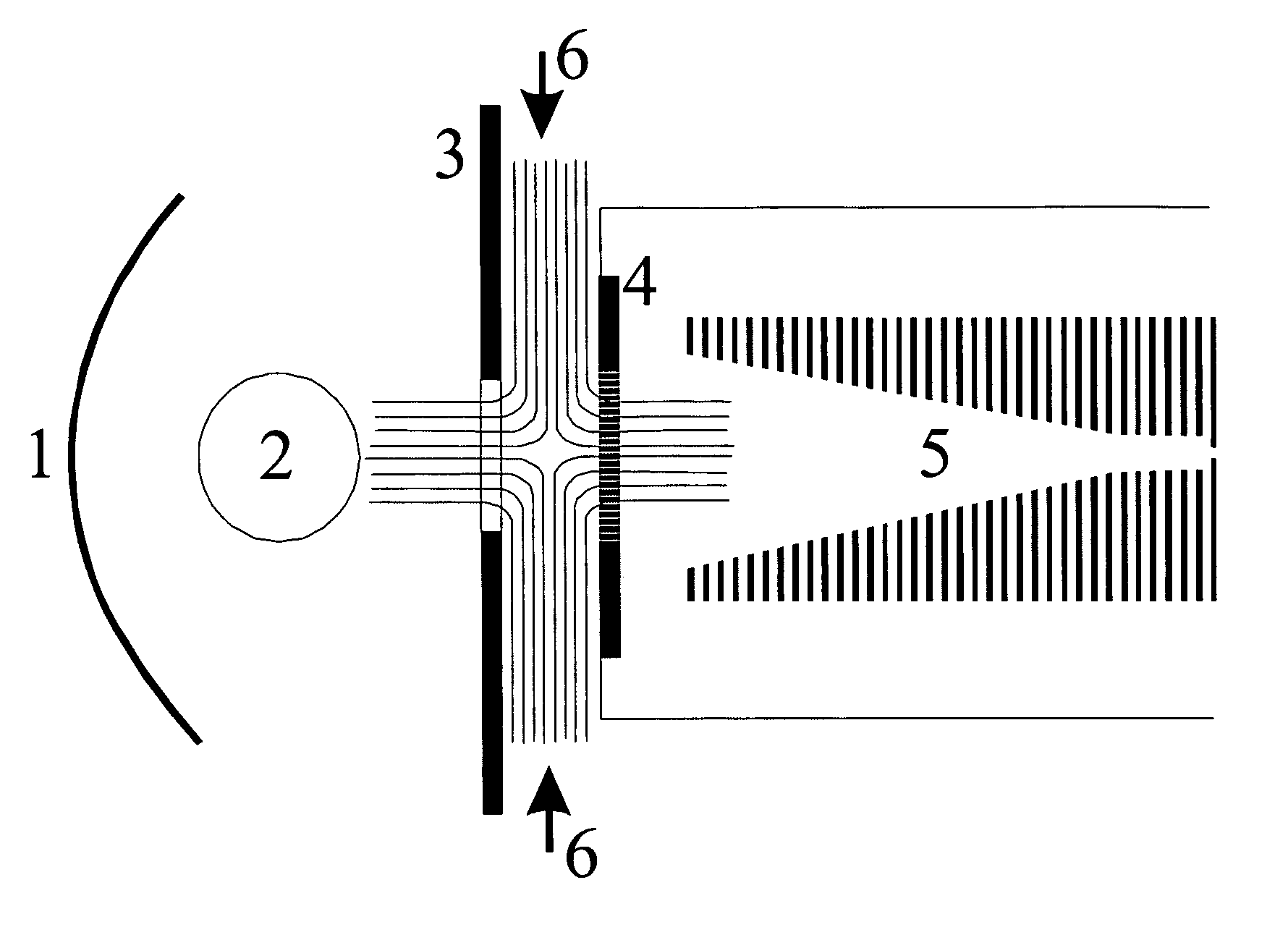Apparatus and method for the transport of ions into a vacuum
a technology of ions and apparatus, applied in the direction of dispersed particle separation, particle separator tube details, separation processes, etc., can solve the problems of strong repulsion and ions would be driven to the wall, and achieve the effect of improving the length-to-diameter ratio, improving the efficiency of multichannel plates, and improving the organization
- Summary
- Abstract
- Description
- Claims
- Application Information
AI Technical Summary
Benefits of technology
Problems solved by technology
Method used
Image
Examples
Embodiment Construction
[0029] The basic idea of the invention is to use a multichannel plate with thousands, usually even hundreds of thousands, of narrow and short microchannels for the inflow of a mixture of ions and gas into the vacuum instead of the single capillary that has usually been used until now. It is necessary to introduce ions into the vacuum for analysis in a mass spectrometer, since every mass spectrometric principle can only be carried out in a good vacuum, frequently only in a high vacuum or ultra-high vacuum (UHV).
[0030] The inflow of the mixture of ions and gas, which begins at pressures near atmospheric, ends initially in a first stage of a multistage differential pump system. In this first stage the ions have to be separated as far as possible from the gas flow and transmitted separately. When a single capillary is being used, this separation is usually done using a skimmer. The focused gas jet which emerges from the single capillary is directed toward the narrow passage opening of ...
PUM
 Login to View More
Login to View More Abstract
Description
Claims
Application Information
 Login to View More
Login to View More - R&D
- Intellectual Property
- Life Sciences
- Materials
- Tech Scout
- Unparalleled Data Quality
- Higher Quality Content
- 60% Fewer Hallucinations
Browse by: Latest US Patents, China's latest patents, Technical Efficacy Thesaurus, Application Domain, Technology Topic, Popular Technical Reports.
© 2025 PatSnap. All rights reserved.Legal|Privacy policy|Modern Slavery Act Transparency Statement|Sitemap|About US| Contact US: help@patsnap.com



